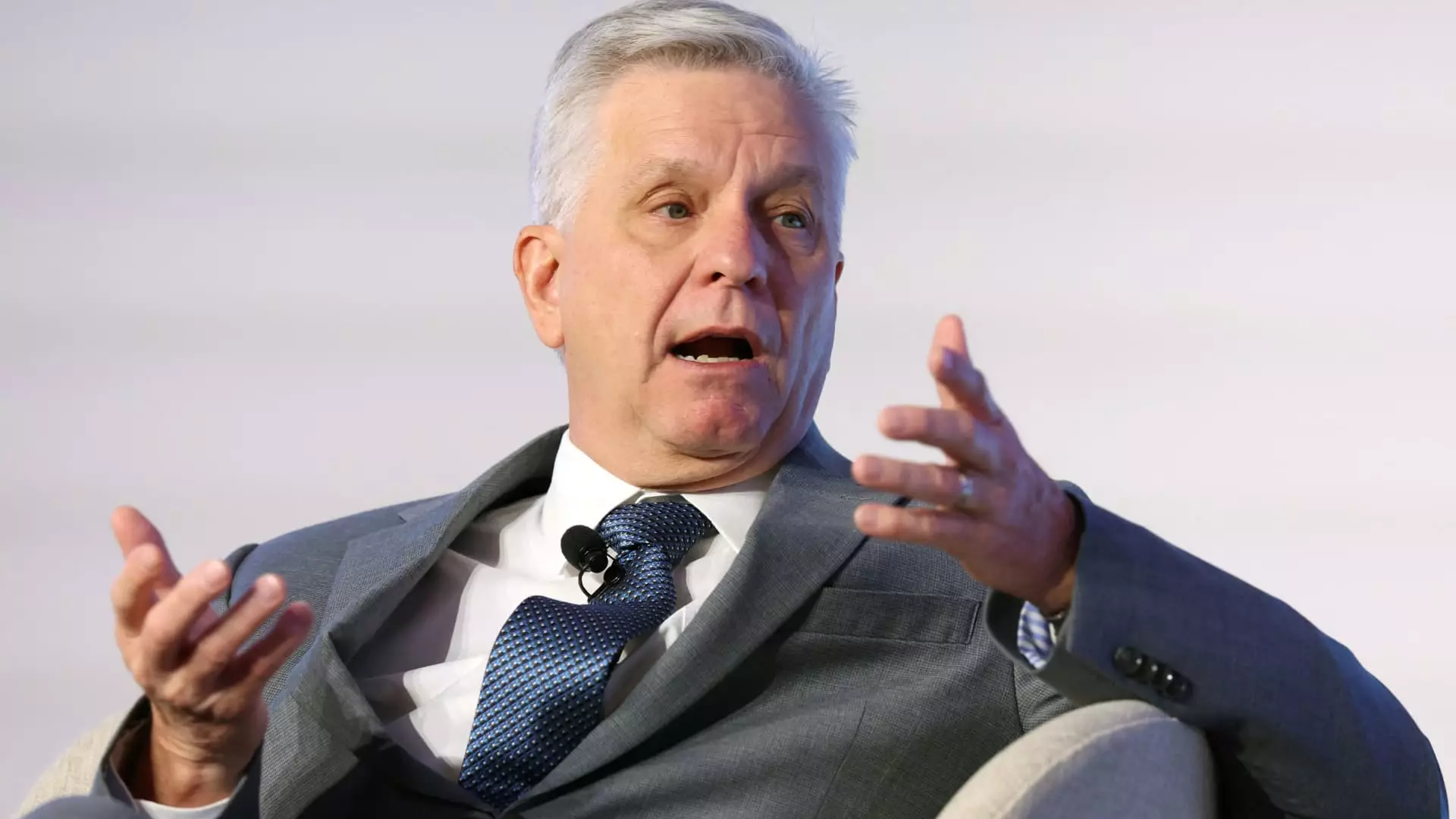As the U.S. economy grapples with inflation and interest rates, Federal Reserve Governor Christopher Waller has recently expressed an optimistic outlook on the potential for interest rate reductions in the coming year. This perspective, shared during a CNBC interview, diverges from prevailing market sentiments, suggesting a nuanced approach to the management of monetary policy under current economic conditions.
Waller’s comments indicate a willingness from the Federal Reserve to consider lowering interest rates multiple times throughout the year, contingent upon a favorable economic landscape. He posited that if inflation continues to decelerate, the central bank could initiate cuts as early as the first half of the year. This assertion highlights the Fed’s responsive nature, emphasizing that economic data on key metrics, such as inflation rates and unemployment figures, will ultimately govern decision-making.
The governor hinted at the possibility of making three to four incremental cuts, depending on how promptly the economy displays signs of stabilization. He noted that such reductions would typically manifest in quarter-percentage-point increments. However, he also warned that if inflation proves obstinately high, the central bank may regress to a lower number of cuts, or potentially even a halt in reductions.
In light of Waller’s optimism, traders reacted swiftly, adjusting their expectations for the pace of potential rate cuts. Following his remarks, the market-implied odds for a May interest rate cut surged to approximately 50%, while June was viewed as an even more probable timeline for further reductions. Consequently, expectations for a second cut by the end of the year increased to about 55%, reflecting a burgeoning belief among investors that the Fed may adopt a more aggressive approach to easing.
This heightened expectation for rate cuts serves as a crucial reminder of the tensions inherent within financial markets, where speculation often drives sentiment ahead of policy decisions. The implications of Waller’s comments encapsulate the delicate balance that central banks maintain between fostering economic growth and controlling inflation.
Central to Waller’s expectations is his conviction that inflation will continue to soften throughout the year. Citing a core consumer price index (CPI) reading of 3.2% for December, Waller recognizes that while prices have shown some resilience, he nonetheless believes that the most challenging aspects of inflation are beginning to abate.
His confidence is underscored by a belief that the persistent inflation trends seen in the previous year will diminish. “I think inflation is going to continue to come in towards our target,” Waller stated, expressing a more bullish view than some of his colleagues at the Federal Open Market Committee (FOMC). While several months of economic data have demonstrated that certain sectors could continue to experience stickiness in pricing, Waller maintains a belief that these issues will steadily resolve.
Despite Waller’s optimistic tenor, a cautionary tone prevails among many economists and FOMC members. During their last meeting, projections pointed towards two potential rate cuts by 2025, signaling a more deliberate and hesitant stance than perhaps Waller’s projections may suggest. The next FOMC meeting, slated for late January, further emphasizes this cautious approach, as the market currently anticipates little to no movement in rates during that session.
Waller articulated the Fed’s intent to monitor economic developments closely, stating, “We’re in really no rush to do things.” This statement reinforces the idea that while the prospect of rate cuts exists, the path forward will be contingent on a careful analysis of incoming data.
The dynamic interplay between inflation expectations, economic growth, and market reactions will shape the Federal Reserve’s strategies in the near term. Governor Waller’s reports of multiple potential rate cuts in the upcoming year reflect a noteworthy optimism that seeks to balance encouraging economic activity while striving to maintain price stability. However, the cautious stance presented by the wider FOMC circles indicates that the approach to interest rates will remain adaptable, with policymakers poised to respond robustly to evolving economic indicators. The year ahead will be pivotal in determining how these nuanced views coalesce to shape U.S. monetary policy.

